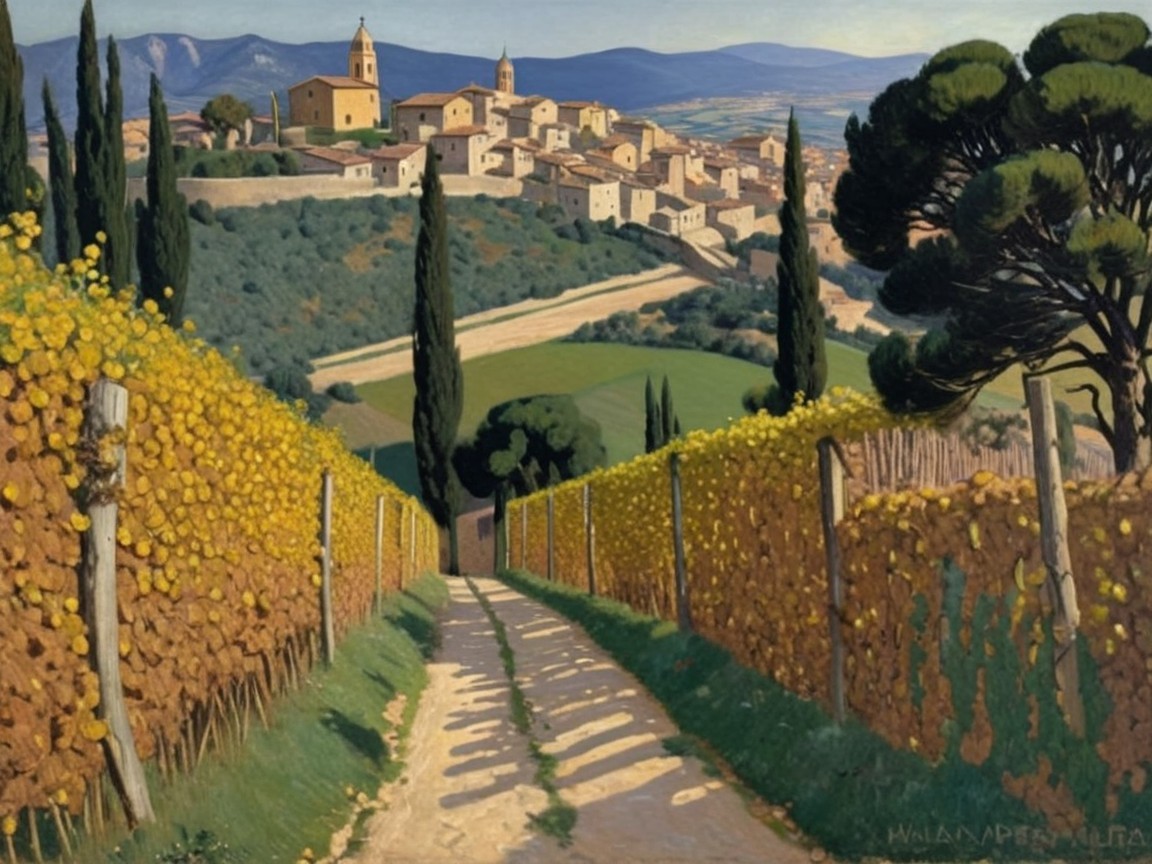Comments
Loading Dream Comments...
You must be logged in to write a comment - Log In

 Artist
Artist
When the villagers of Montecalvo spoke of the strada dei filari d’oro—the Road of Golden Vines—they did so with the reverence normally reserved for relics or forgotten saints. The path descended between two blazing rows of autumn grapes, guiding the traveler as though into a manuscript illuminated by a patient medieval hand. I had come not as a pilgrim, but as a scholar of obscure agrarian semiotics, following a rumor that the vineyard itself was a kind of text.
The rumor began with Fra Agostino, a 17th-century monk whose marginalia I had uncovered in a decaying folio. He wrote of a “lexicon of vines,” a coded language cultivated by the monastic vintners of Montecalvo. Each season’s pruning, each trellis’s angle, each alignment of cypress and shadow served as a syllable in a vast terrestrial sentence. The villagers assumed the monk’s writings were the harmless fabrications of an overwrought imagination—an accusation that, as always, encouraged my interest rather than dimmed it.
As I walked the path, I began to suspect Agostino had not exaggerated. The vines grew in such precise modulation—clusters repeating in measured intervals—that the landscape began to resemble a palimpsest overwritten by centuries of human intention. From the town above, its towers rising like exclamation marks, a warm wind drifted down, stirring the leaves as though prompting them to speak.
At the midpoint of the path I noticed something unusual: a series of posts notched in a sequence identical to the cadences found in Gregorian chant notation. The realization fell upon me like a medieval revelation. The vineyard was not merely a text—it was a score. The monks had composed a hymn in plants, a botanical chant meant to be read not by eye but by foot, each step completing a phrase, each turn of the path resolving a hidden cadence.
And as I reached the final curve, where the vines bowed inward like obedient acolytes, I understood the intention. The melody—if one could call it that—was a gesture toward harmony, a reminder that the world itself was once interpreted as scripture, its hills and valleys arranged like the clauses of a cosmic grammar.
The town of Montecalvo shimmered before me, ancient yet newly comprehensible. And I could not help but think that Fra Agostino, cloistered in his cell centuries ago, had composed the only masterpiece that requires sunlight and seasons to be fully read.